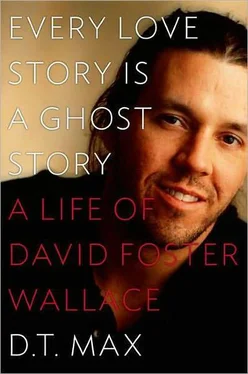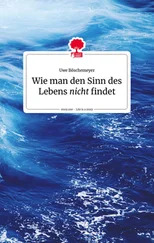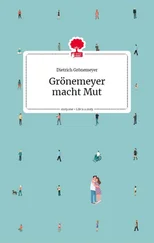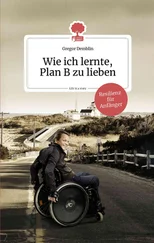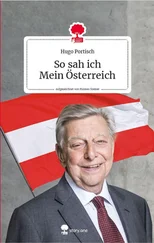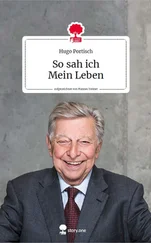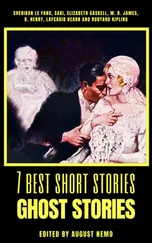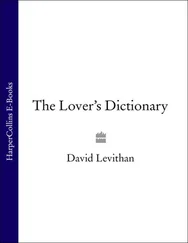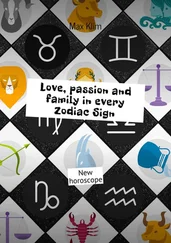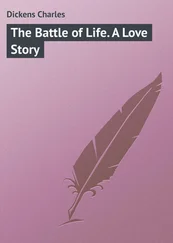In Bloomington: Francis B. and his wife, Terri, and her daughter Sarah Adams; Susan Barnett; Becky Bradway; Mimi Davis; Tim Feeney; Ron Fortune; Lee Freeman; William Gillespie; Jason Hammel; Juliana Harms; Charlie (“he saved me from the dog”) Harris and his wife, Victoria, and daughter Kymberly (the fabulous Harris family!); Amy Havel; Doug Hesse; Greg Howard; Bob McLaughlin; Erica Neely; John O’Brien; Doug and Erin Poag; Marty Riker; Joe S.; Ben Slotky; Curtis White; and Deb Wuliger. A special thank-you to Bill Flick of the Pantagraph for searching its archives.
The Pomona years: Margaret Adorno (Pomona’s peerless registrar), Kyle Beachy, Daniel Birkholz, Ben Casnocha, John D’Agata, Kevin Dettmar, Maria Donapetry, Kathleen Fitzpatrick, Rena Fraden, Neil Gerard, John Goodson, Kaneisha Grayson, Christopher Hamacher, Patrick Jagoda, Natalie Klein, Robert Lesser, Coty Meibeyer, Kelly Natoli, Ashley Newman, Colleen O’Rourke, Caroline Potter, Jared Roscoe, Paul St. Just, John Seery, Amanda Shapiro, Bryn Starbird, and J. B. Wogan.
From the world of magazines and books, among those who worked with Wallace, special thanks go to Michael Pietsch, his editor at Little, Brown, who answered countless questions and helped me find my way through the labyrinth of The Pale King, and Gerald Howard, his editor at Penguin, who took me through David’s early years. Also my deep thanks to Jennifer Barton, Adam Begley, André Bernard, Marlena Bittner, Will Blythe, John Bohrer, Mark Bryant, Lisa Chase, Jesse Cohen, Charis Conn, Will Dana, Josh Dean, Peter Desrochers, John Dickerson, Jonathan Galassi, Colin Harrison, Jack Hitt, Tom Jenks, Jay Jennings, Vanessa Kehren, Bill Keller, Glenn Kenny, Stephen King, Jeannie Luciano, Gerry Marzorati, Steven Moore, Eve Rabinovits, Amy Rhodes, Gemma Sieff, Lee Smith, Bill Tonelli, Alice Turner, and Holly Wilkinson.
Sui generis is James Ryerson, who helped me with many thorny questions about Wallace and “Uncle Ludwig” (Wittgenstein). I owe a debt to his thinking and writing on Wallace’s philosophy thesis, too, and am grateful he read drafts of my passages. Wherever I went, I met Jamie on the way back, sometimes in the company of Caleb Crain, who also lent a hand in similarly difficult moments where Everything and More was concerned.
Stephen Lacy supplied the details of his interesting colloquy on taxes with Wallace, and Jennifer Schuessler supplemented with her own research from her excellent piece on Wallace and the IRS from the New York Times Book Review. David Hering of the University of Liverpool kindly shared some of his research on Wallace’s earliest drafts of Infinite Jest with me and was a generous sounding board to my theories.
The Wallace community is fortunate to have Nick Maniatis’s thehowlingfantods website: if you are curious about it and it’s about DFW, it’s there. I know of no author better served by his Web public. Nick graciously put out a request for letters, and several interesting pieces of correspondence came forth. Wallace wrote honestly to a wide range of people, many of whom he did not know well. Among those I’d particularly like to thank for sharing letters are Weston Cutter, Christopher Hager, Brandon Hobson, Marie Mundaca, and Nick Solomon.
Two noted Wallace scholars helped me as well. Stephen Burn of Northern Michigan University generously forwarded me correspondence and made available some of his own research, as did Marshall Boswell of Rhodes College. Adam Kelly of University College, Dublin, and Harvard lent a hand in interpreting the role of literary theory in Wallace’s fiction. Frank Bruni shared his memories of researching his Wallace profile for the New York Times’ magazine section, and David Streitfeld told me of his visit to Wallace’s house for Details. Deborah Treisman shared correspondence and memories of Wallace’s contributions to the New Yorker.
Of the many interviewers who went before and on whom I relied for David’s words, I want to particularly signal my debt to David Lipsky, whose long-ago visit with Wallace at the time of Infinite Jest for Rolling Stone (the piece was never written) he turned into an insightful, enjoyable book, and also to Larry McCaffery, who interviewed David for the Review of Contemporary Fiction and kindly made his drafts available. That interview remains the point of departure for all Wallace studies.
Among archivists and librarians, I would like to give a special thank-you to Thomas Staley, the director of the Ransom Center, where David’s papers are housed, as well as to his top-notch staff, among them Megan Bernard, Andi Gustavson, Ancelyn Krivak, Molly Schwartzburg, Danielle Sigler, and Jennifer Tisdale, for their kind assistance. David McCartney helped me with the Frank Conroy papers at the University of Iowa, and Rosemary Cullen with the Brad Morrow papers at Brown University. Peter Nelson of the Amherst College archives tabulated David’s innumerable academic awards for me and found correspondence and yearbook material. Emily Boutilier put out the word to Amherst alumni who knew David.
Without all these people this book would never have been written, but there is one person who lent truly special support: Michelle Dean, a talented journalist who as my research assistant during the latter part of this work, displayed astonishing energy and commitment, playing a key role in helping to make this complicated story as accurate and comprehensive as possible. I expect to see her between her own hardcovers soon.
Two Wallace aficionados also were indispensable: Matt Bucher, who heads the Wallace-1 email list, selflessly gave of his time and energy. He read draft language and suggested improvements, drawing on his top-level knowledge of DFW. My apologies to Jordan for dragging him away from child rearing to help me again and again. And Jonah Furman, just out of Johns Hopkins University, lent his own gifts as a fact checker, research assistant, deep Wallace reader, and sounding board.
Three other young researchers lent their time and talents too: Shelby Ozer, a talented high school senior; Becky Cooper, world-trotting polymath; and Mark Byrne, who worked as a research assistant for me while also a student in the Literary Journalism program at NYU, under the generous Professor Robert Boynton. I once asked Mark if a friend of his was also a Wallace fan, and he memorably replied: “Honestly, I don’t think I’ve ever had a sustained friendship with someone who’s not.”
During the latter part of my research and writing I enjoyed the support of a fellowship from the Leon Levy Center for Biography at the CUNY Graduate Center. There I wish to thank trustee Shelby White, Judy Dobrzynski, directors past and present Brenda Wineapple and Gary Giddins, as well as Adam Begley, Madison Smartt Bell, Tom Hafer, Elizabeth Kendall, John Matteson, and Ikuyo Nakagawa. Staff members Caitlin Delohery, Michael Gately, and Alyssa Varner were enormously kind and helpful at this special institution.
At Viking Penguin, my enormous gratitude to Paul Slovak, my editor, whose enthusiasm helped propel me on this complex voyage and whose calm kept me from capsizing; his assistant, David Martin; and indefatigable editor Beena Kamlani. Also to my agent, Elyse Cheney, and her deputy, Alex Jacobs, as well as to Tania Strauss, who arrived still dipped in the glamour of Hollywood, which she got working with my film agent, Howie Sanders at UTA. And in London, my British editor, Philip Gwyn Jones, and his colleague John Freeman, who, coincidentally, once interviewed Wallace himself.
At the New Yorker, the editor David Remnick; my long-time editor Daniel Zalewski; and his assistants, Yvette Siegert and Andrew Marantz; editors Henry Finder and Susan Morrison. This book all started with an email from David one long-ago fall evening. There is no more talented editorial team going. They, as Wallace would say, “simply separate sock from pod.”
Читать дальше
